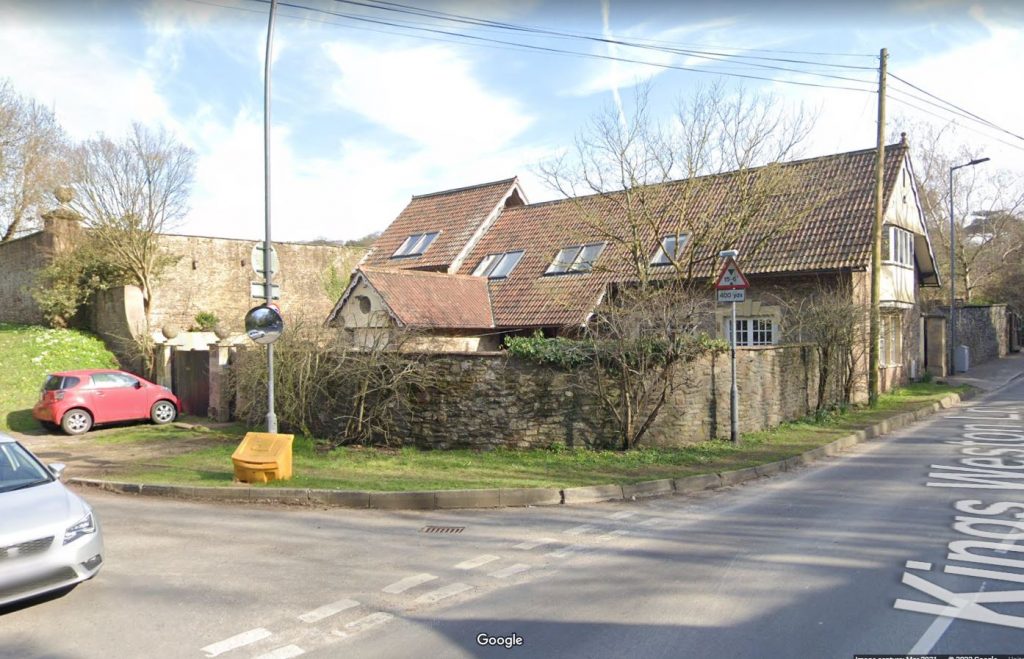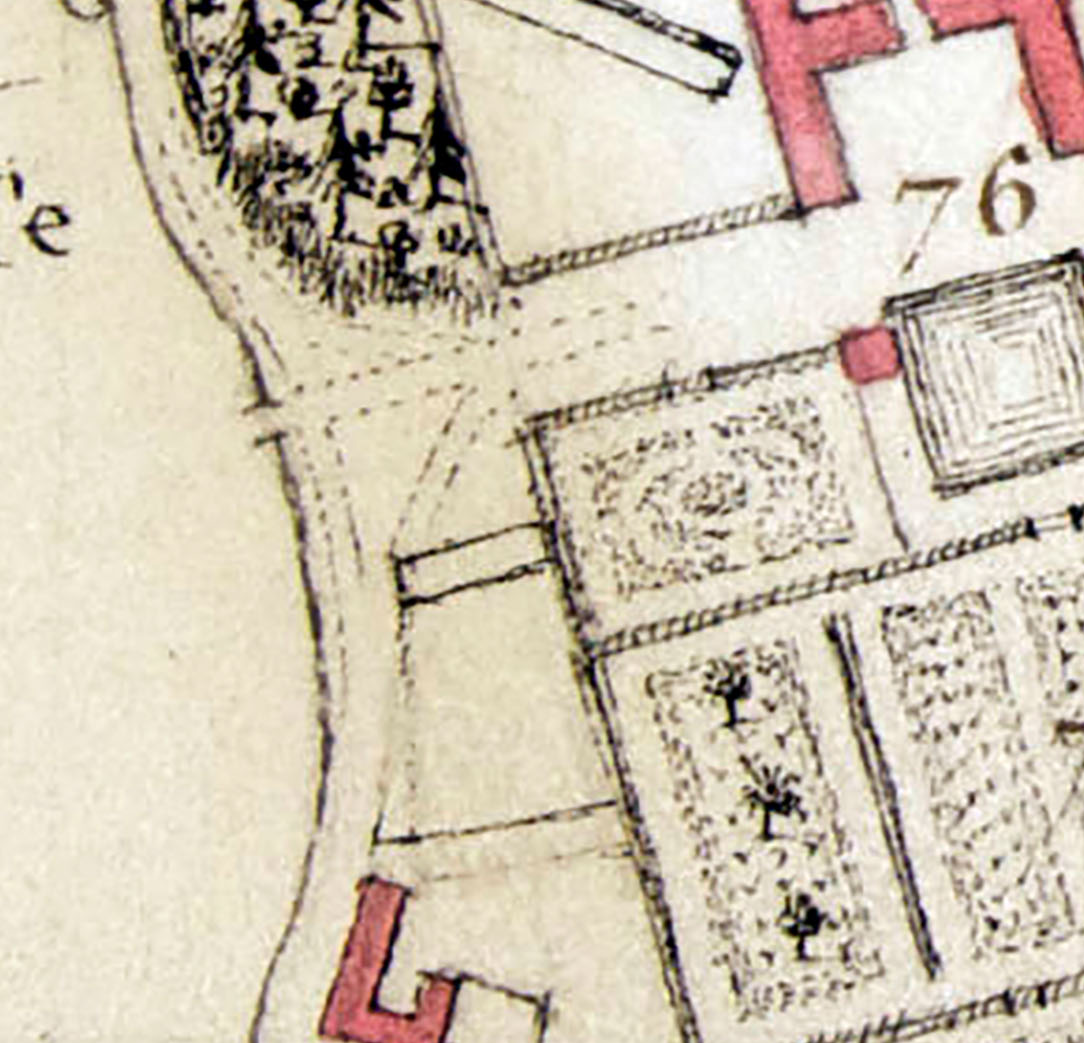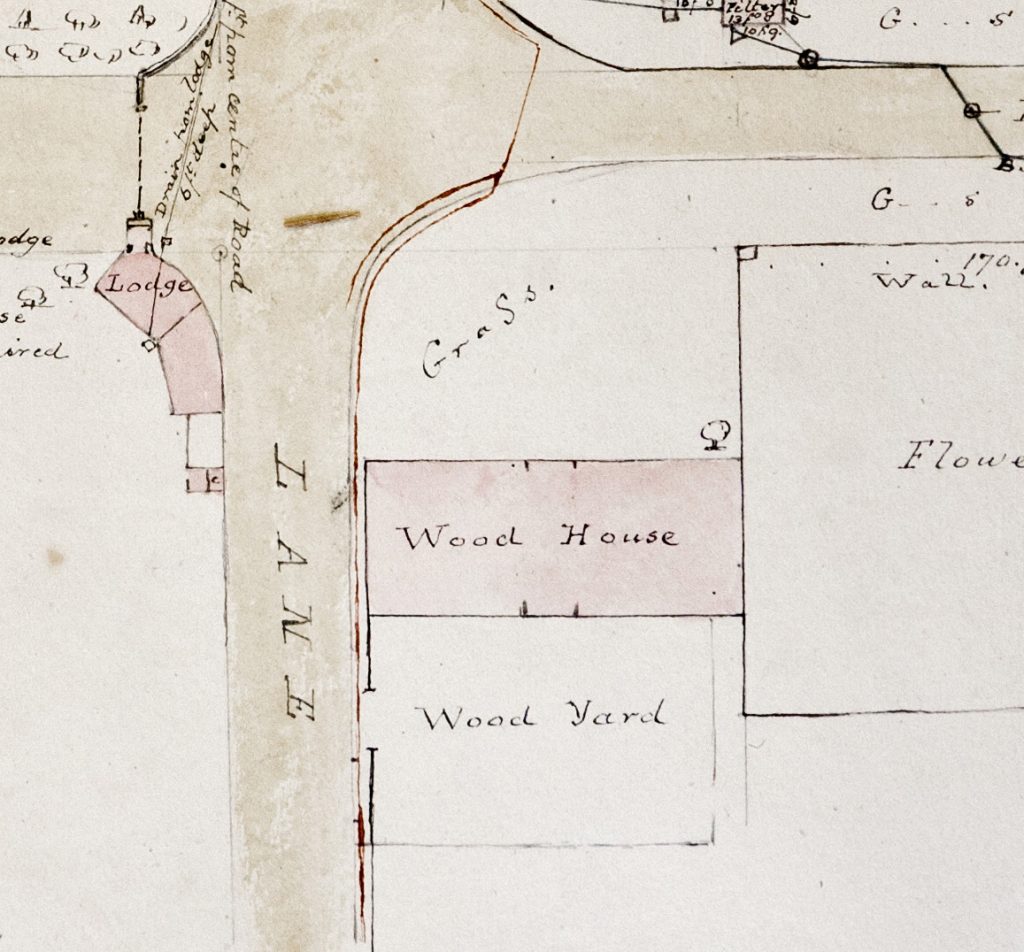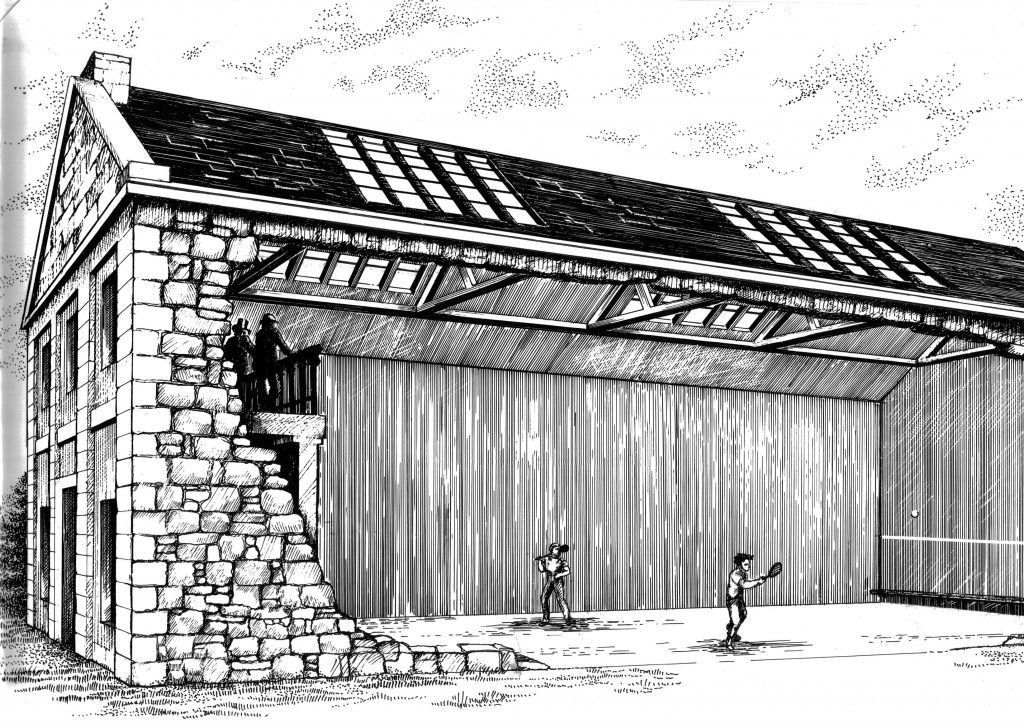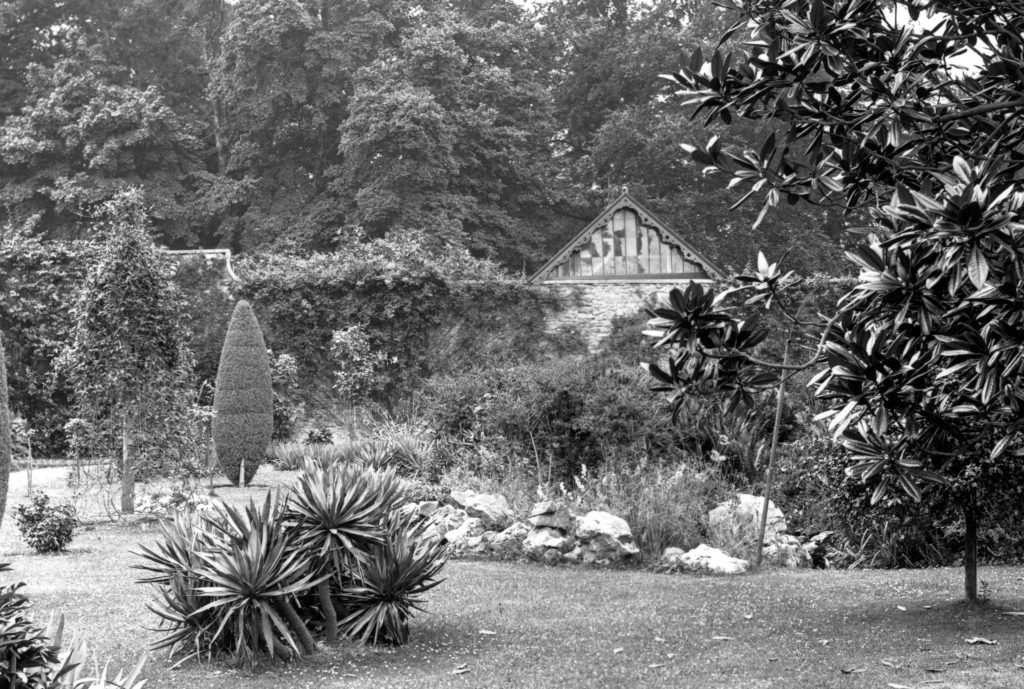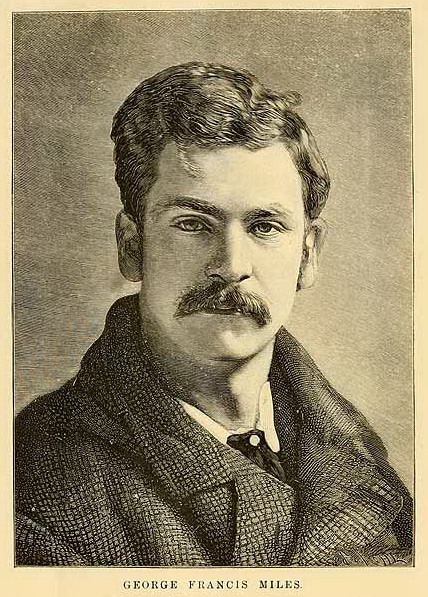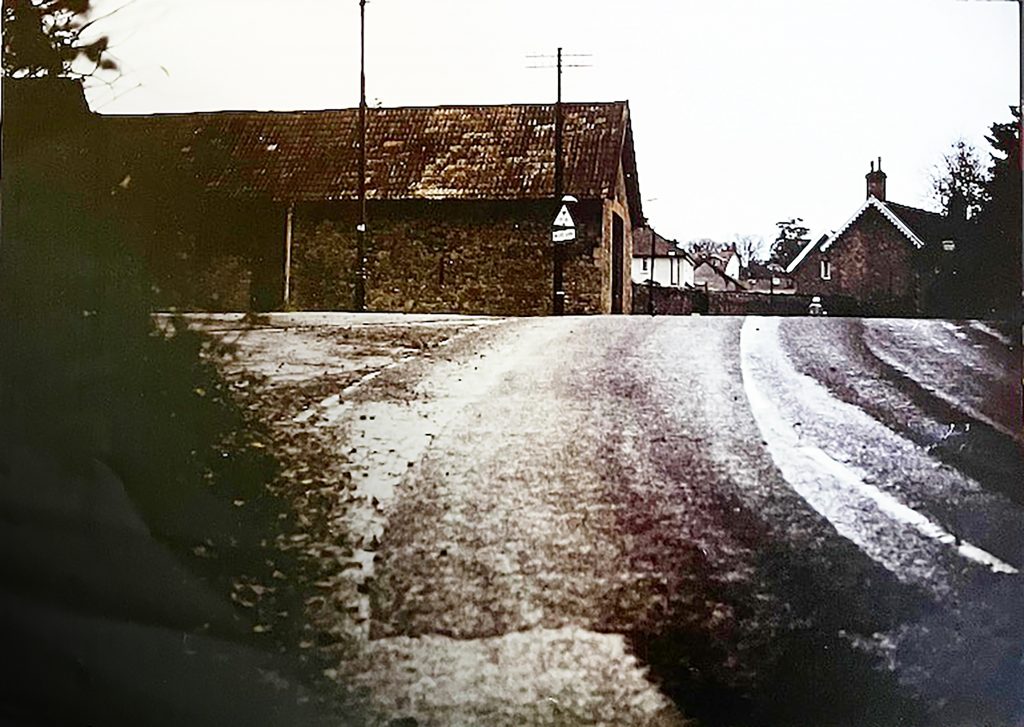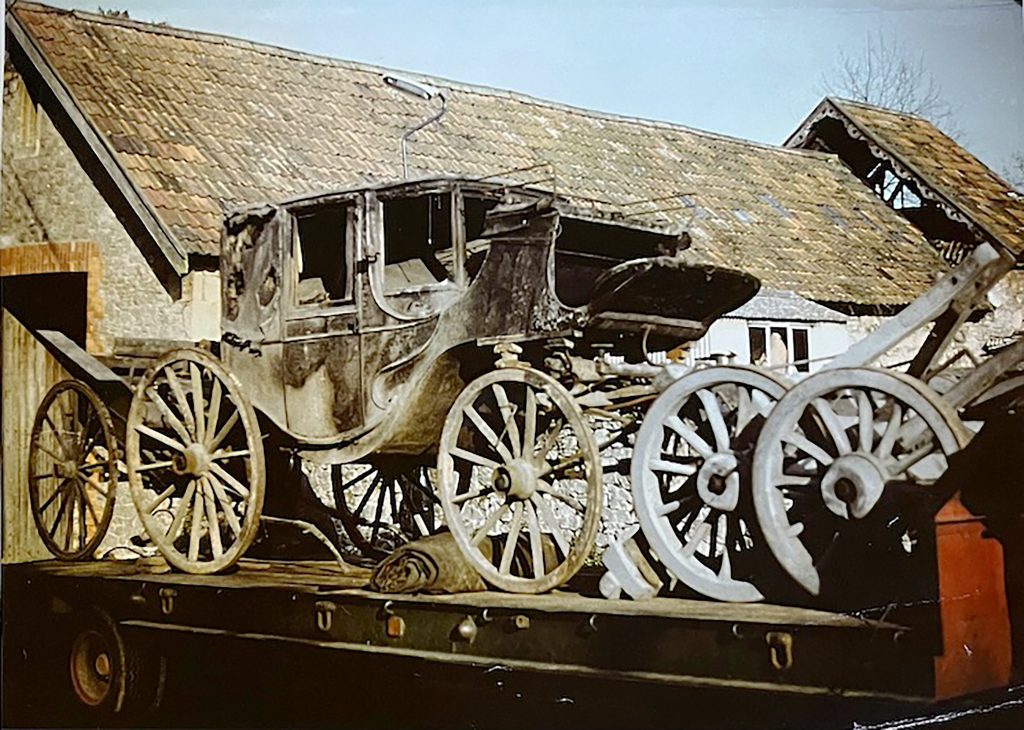The acquisition of a detailed view of the former Kings Weston Inn is occasion enough to add a little colourful history to the building. The view shows the inn at the turn of the 20th Century with a large party of guests sitting down on long tables for refreshments. The inn had ceased trading as a pub by this point but is known to have offered accommodation for tea parties under a Mrs Withers. This may be one of the many meetings of ladies of the Primrose League, a Conservative organisation, that are known to have taken place at Kings Weston at this time.
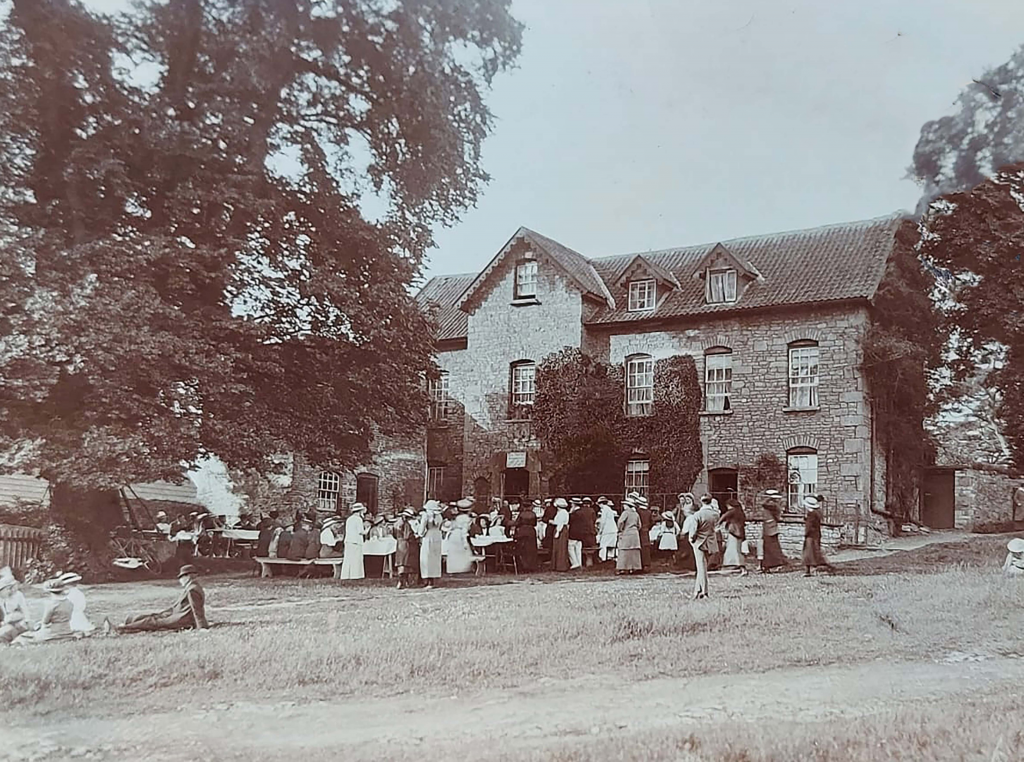
The building itself was probably built shortly after 1718, when a drawing for an inn, then ale house, at Kings Weston was drawn up by the architect Sir John Vanbrugh. The dated drawing was superseded by a later version that is strongly similar to the core of the present building, but we can also attribute this design to the great architect. The building was much smaller than it is today but with features that are still recognisable. A central dog-leg stair ran up the centre of the building with a simple room either side on each floor. The central bay of the building rose above the pitched roof, terminating in a low tower that, we believe, was used as a viewing platform for patrons.
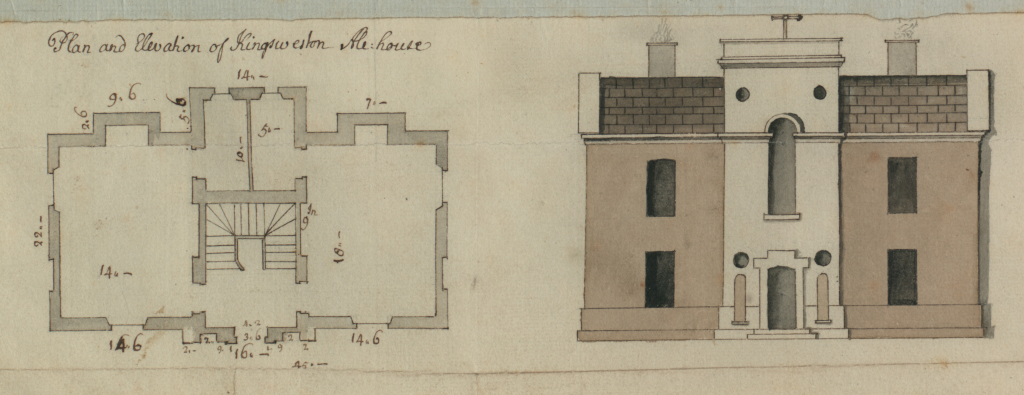
The building of inns to serve visitors was not unusual in the Georgian era, but that at Kings Weston is very early, being only a year later than the New Inn at Stowe, Buckinghamshire, built for the same purpose. Using the drawn dimensions has enabled us to create a simple 3D model of the building before later extensions and alterations changed its appearance. The architect’s measurements compare well with that of the core of the existing building.
We know that there were modifications in the mid-Victorian period, but even before then the building must have been found wanting. Parties from Bristol and Bath regularly visited the inn for recreation during the Eighteenth Century and it was part of well-published local tours.

In stark contrast to the genteel party in the new image, one intriguing report involving the inn comes to us from a newspaper report from 1774, perhaps one that may, or may not, be fitting for publication in Pride month. The incident followed a private tour of Kings Weston house for a couple of visiting gentlemen, given by one of the male servants there. The report implies that the servant was sexually assaulted at the inn by one of the visitors as the other sought to stop him from escaping. It’s not known who Mr L and Mr B were, they both escaped, though we the scandal broke Mr B fled the country all together, no doubt with his reputation shot, and fearing reprisals. How much truth there is in this report is unclear, but it shows the taboo of homosexuality at the time and the risks that men would sometimes go to:
Reading Mercury & Oxford Gazette
Sept 12 1774
Extract of a letter from a Gentleman of Bristol to his friend on London Aug 31
An affair has lately happened here, which has been the general topic of conversation ever since last Wednesday, Mr B—-, Mercer of this city, and Mr L—–, a linen draper, not a hundred miles from the Haymarket, London, went in a chaise together to Kings Weston, to view the house of Edward Southwell Esq – At their departure they offered the servant who showed it a piece of money, which he refusing, they insisted on his drinking a glass with them at the inn they put up at. After they had drank pretty freely, Mr B—- on some pretence left the room; which he had no sooner done. That Mr L—- behaved in such an indecent manner as contrived the man of his brutal intentions; he therefore attempted to quit the room, but was prevented by Mr B—-, who held the door on the other side; finding he could not get out, and being irritated by such an infamous insult, fell upon him and beat him unmercifully.
The noise being heard below, brought several people up, which Mr B finding, thought proper to leave the door and fly to the window from whence he made his escape, leaving Mr L— behind to bear the insults of hostlers, cooks, chambermaids etc who kicked, cuffed, and clawed him, tore his hair, had the dogs set on him, afterwards uncovered him, rolled him in the nettles; finally the maids would have proceeded to castration, had they not been prevented.
Mr Southwell, being acquainted with the affair, ordered two men to guard him that night, with the intent of bringing him to justice the next morning, but he found means to bribe his watch, and got clear off before morning. As for Mr B—- he attended his shop as usual two or three days, till the matter became public, and everybody looking on him equally guilty, he thought fit to decamp, and has not since been seen; it is said that he is gone to France or Italy with an intent never to return.



